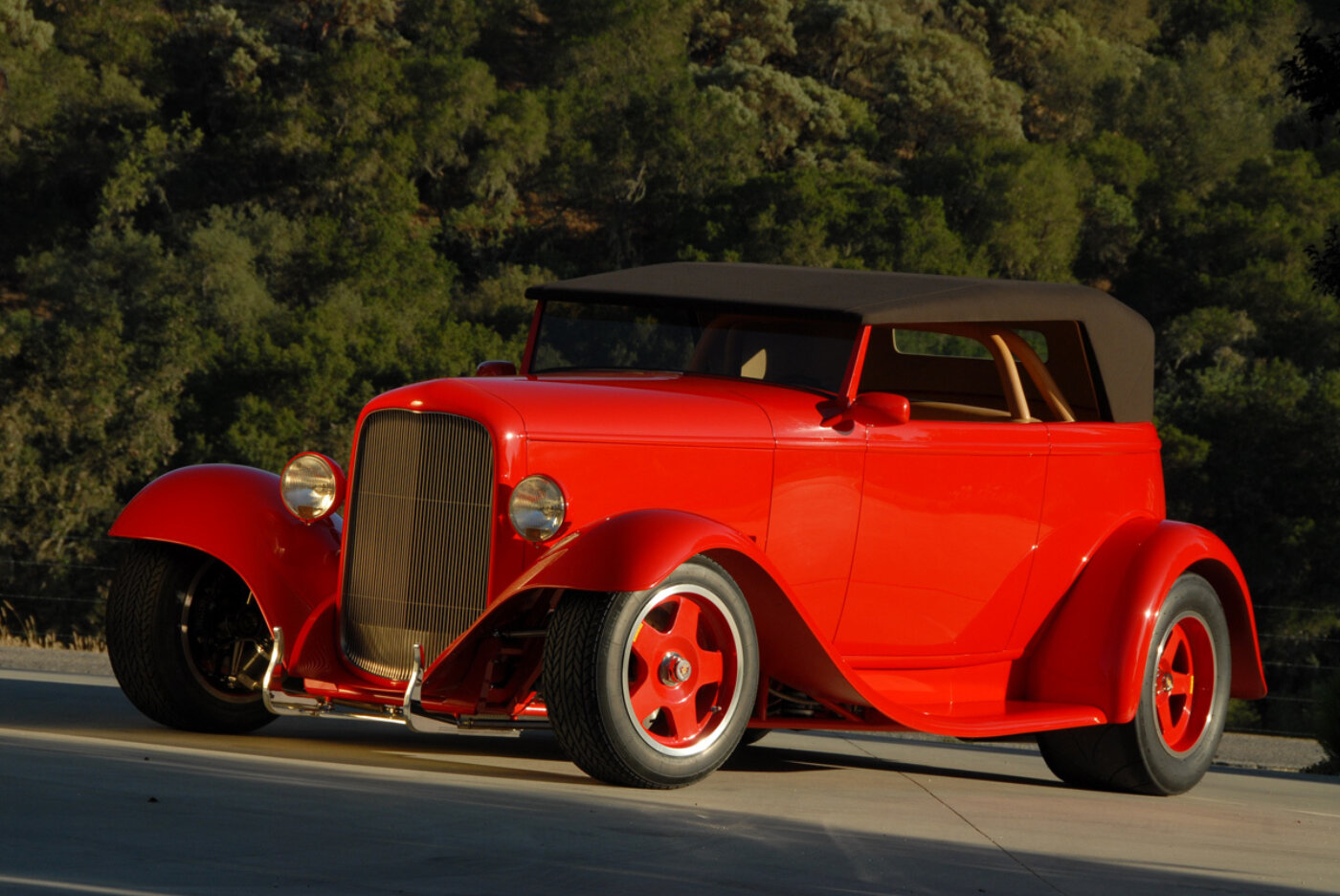
Phaeton With Porsche Power
Text and Photos by Steve Temple
A common joke among street rodders is that there are at least ten times as many “original” ’32 Fords on the road today than when the car was new. Actually, probably way more than that number, when you note all the companies making fiberglass reproductions.
The reasons are many for the enduring and endearing popularity of ’32 Ford. Besides the clean form of the body and sweeping fenders, it boasted a then-new 221-cubic-inch Flathead V-8 that was claimed to crank out 65 horses (but was probably more like 70 hp). Beside not only looking lower and sleeker than its predecessors, it also actually had a lower center of gravity to improve the ride and handling.
The Deuce (so named for its model year) went on to dominate the hot rod scene for decades, and later spawned those repros mentioned at outset. All of which begs a question: what would it take to differentiate one man’s a ’32 from all the rest?
The Phaeton shown here, owned by Bill Tilley, does so decidedly. And not just because it’s a striking version of a rare model. It’s also transformed from a show car to a road car in a remarkable manner.
By way of background, let’s take a look back at the wide range of ’32 Fords produced. They weren’t all “little Deuce coupes,” as the Beachboys crooned. Depending on how you counted them, there were as many as 17 different ’32 Ford models (actually 34, if you count fours and V-8s). They ranged from basic roadster to a three-window coupe to even a wagon. And then there was the Phaeton, one of the most exclusive of them all, with less than 2,500 ever produced. (Only the sedan delivery and station wagon versions were built in fewer numbers.)
By the way, for those not familiar with mythological names, this name of this bucket-shaped body type came from Phaethon, son of Helios, who tried to drive the Chariot of the Sun. He didn’t succeed, tipping it over and setting the earth on fire.
Well, Tilley’s ’32 Ford Phaeton might not ignite the planet, but it sure can scorch its tires. Rather than a Chevy 350 engine transplant, as seen so often, this all-American rod is powered by a Porsche 928 V-8.
Okay, some rodders will cry heresy here, but the whole point of a rod is to build how you want it—and then some. Originally conceived by Tilley’s business partner and friend, Jerry Brassfield, this Teutonic-flavored Phaeton was chosen partly so there would be a couple extra seats in the back for his kids. (Ironically, though, by the time this multi-year project was completed, they were grown.)
Why such a lengthy buildup period? Well, for one, to avoid the flexible frame that most ’32 Fords are known for. Instead, the car’s builder, Paul Newman of Newman Car Creations, fabricated a strong platform of ¼-inch tubing, thoroughly triangulated, which would fit under the floorboards, he explains. This was the most challenging part of the build, he admits: “It never ended—It’s basically putting a race-car structure under a ’32 Ford.”
Portions of the tubular frame are visible in the wheel wells, just as the perimeter U-shaped frame could be seen on the original ’32 Ford. But that’s where any semblance of similarity ends.
Rather than transverse leaf springs, the suspension rides on custom dual A-arms in front, and an independent Porsche transaxle rearend. Henry Ford would likely never have approved of such costly complexity (but then again, but he was known to be stubborn in general, even initially resisting the use of rubber engine mounts).
What drove Newman to experiment with such a radical revision of the chassis? Turns out that Brassfield’s son Darron was a race-car driver at the tender age of 18, and GM built a customized C4 Corvette for him with the help of famed Lee Dykstra (known for the DeKon Chevy Monza, among others).
“I used that Corvette as inspiration and plans for this hot rod, with the same geometry and pickup points,” Newman notes. “It has some serious race-car suspension.”
Topping this technically advanced foundation is fiberglass form developed by Morgan Manufacturing near Santa Cruz, CA. Newman recalls that only 15 bodies were ever made by this company. He notes that another challenge wasn’t mounting the four-seat tub, but sorting out the carburetion of the 265ci, 300-plus hp Porsche V-8. For a more traditional look, the EFI was tossed, and Newman handcrafted an intricate control system of cables pulleys. “I didn’t use arms, because it was hard to get the Dellorto carbs to open at the same time,” he explains. But the radius of the pulley setup put them in sync.
Other Porsche components include the torque tube for the transaxle, along the CV joints and axles, plus 935 calipers. For some additional Euro styling elements, the Momo logo appears on the steering wheel and rims as well.
For all the exotic components, though, the car still needed some more sorting out to make it user-friendly on the street. So when Tilley took the car under his wing (along Brassfield’s ’57 T-bird and ’59 Cadillac), he had Harry Feroyan of New Century Auto add insulation around the cockpit, upgrade the exhaust system, and fine-tune the suspension and carburetors.
While this Phaeton has already been recognized over the years as a milestone street rod for its innovative design, the real reward for Tilley is the driving experience. He’s simply ecstatic about his revamped road-going rod—“It just has such a wonderful sound,” he says. “It’s really magnificent.” All told, one hot chariot.

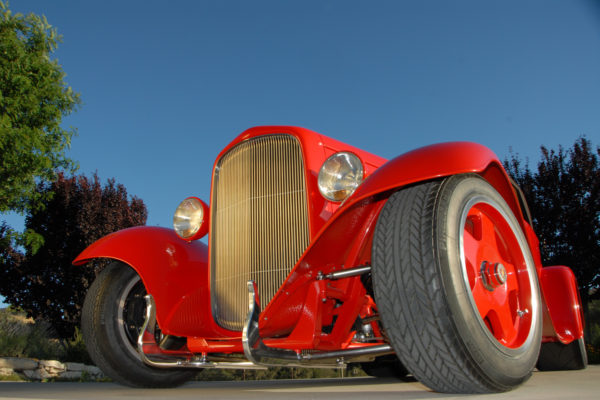
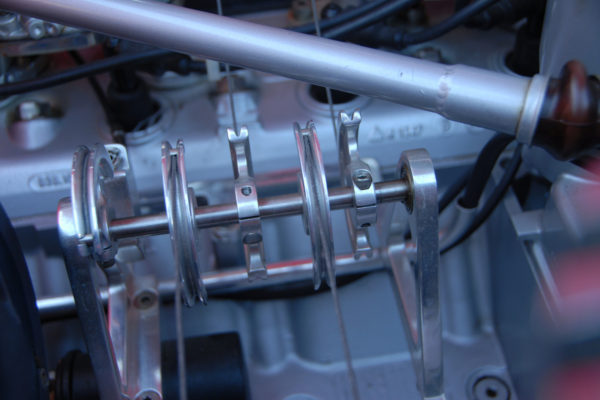
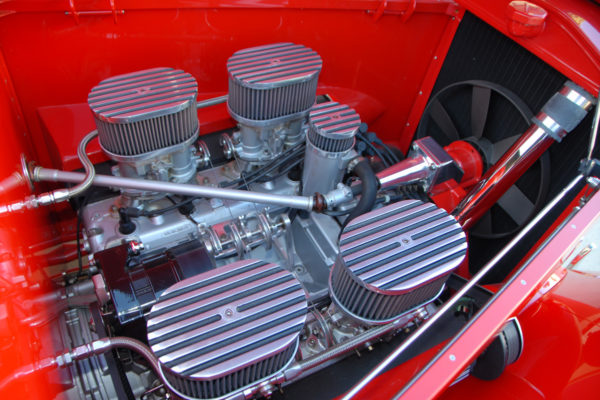
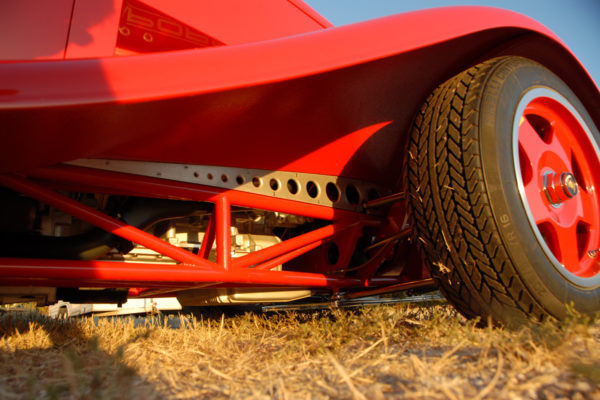
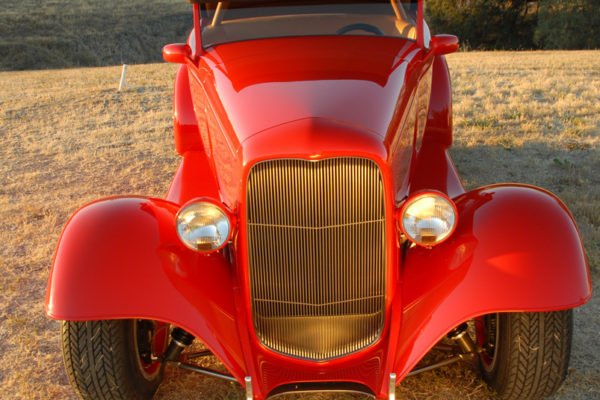
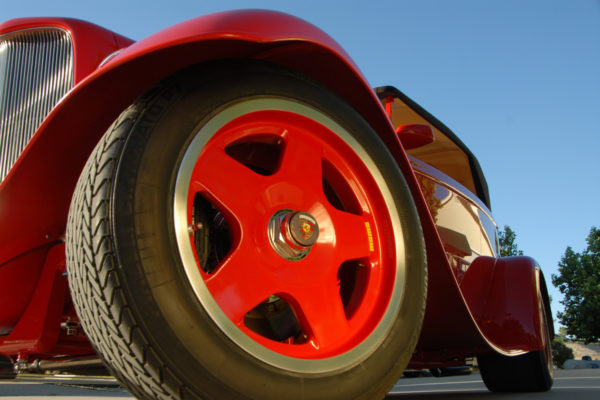
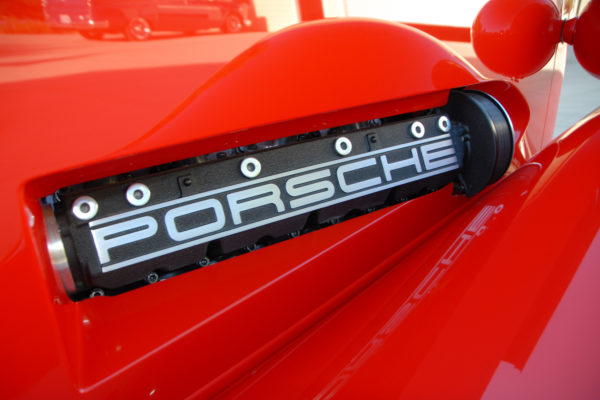
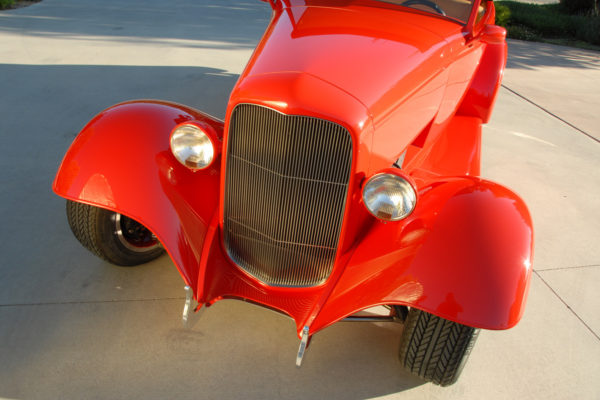
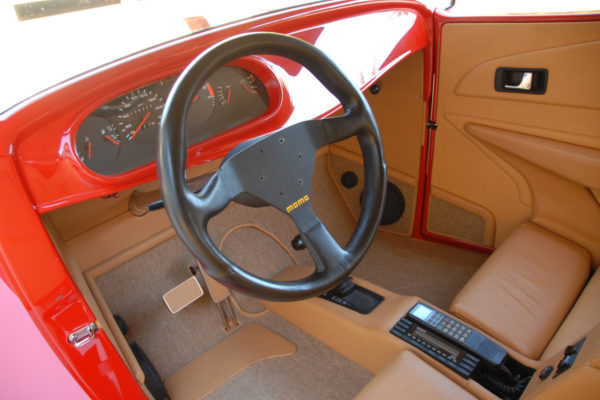
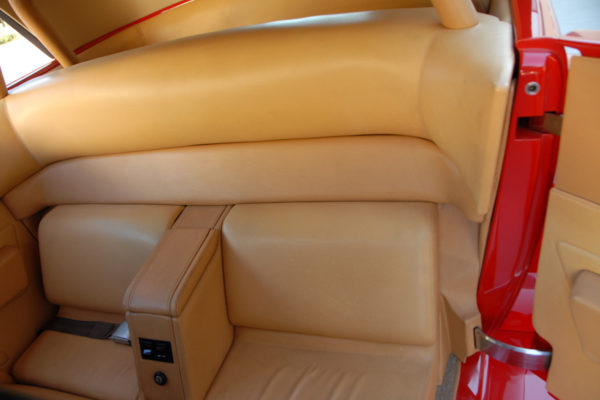
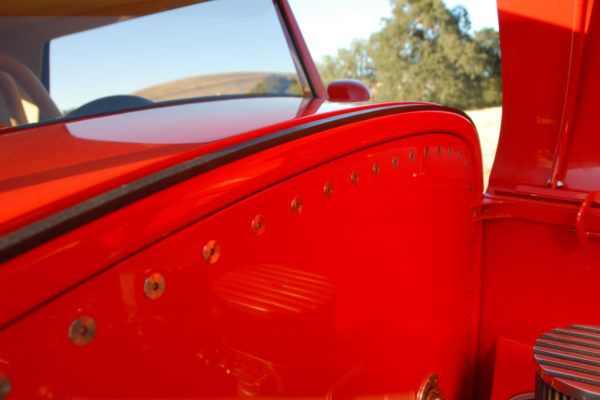
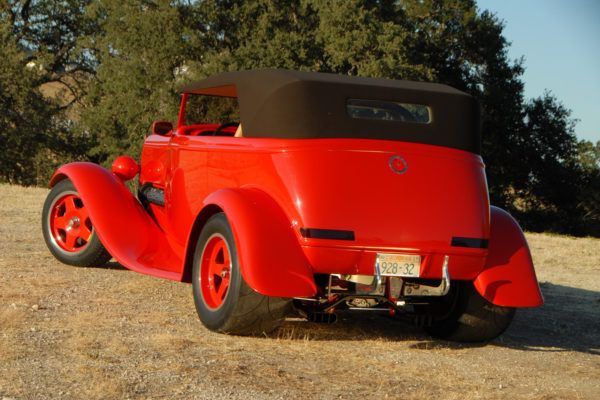
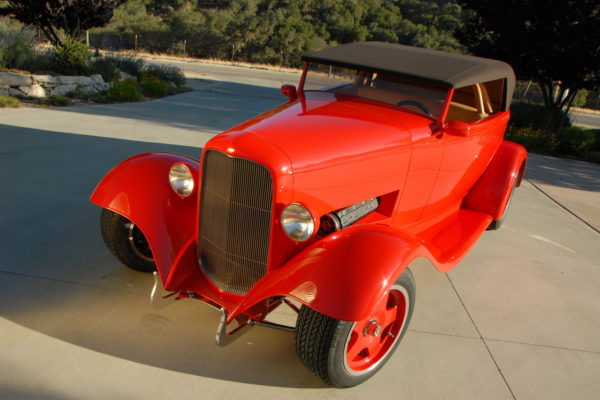
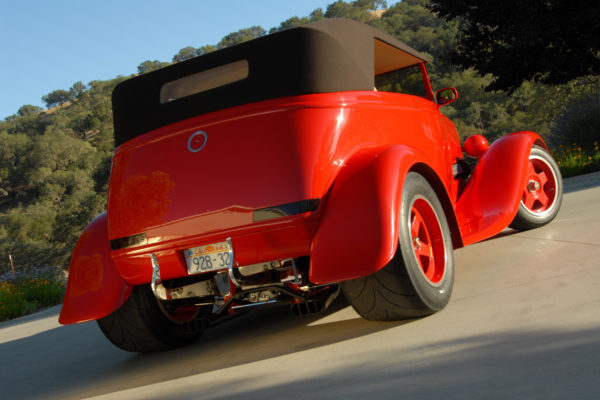
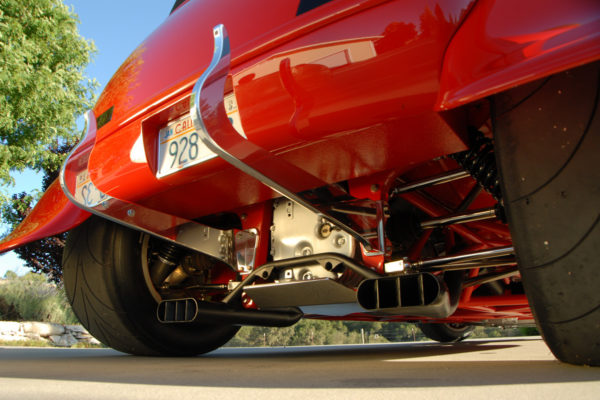
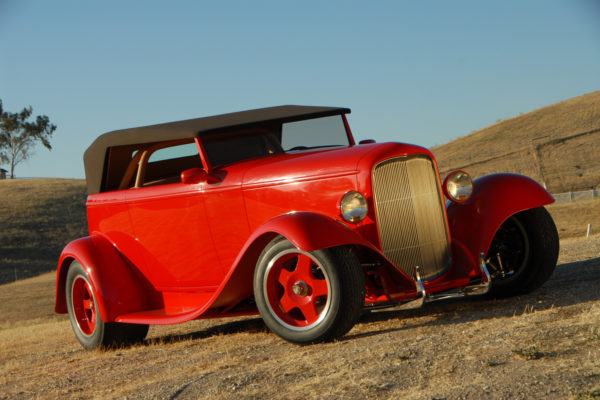
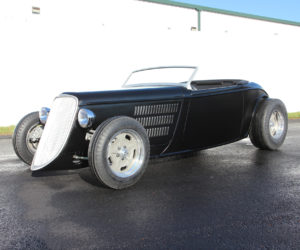
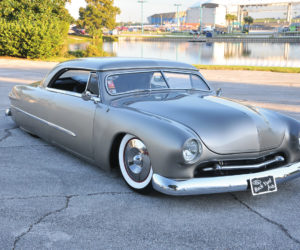
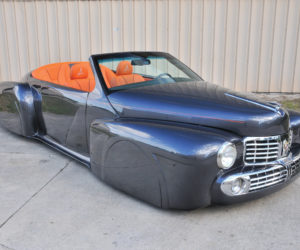
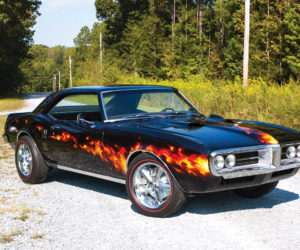
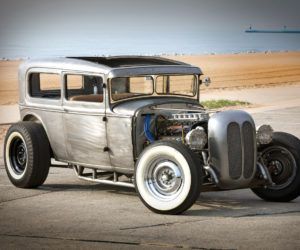
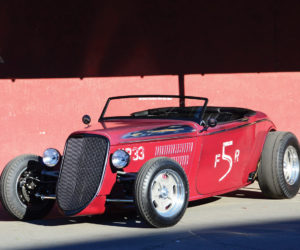




Comments for: HOT CHARIOT
comments powered by Disqus